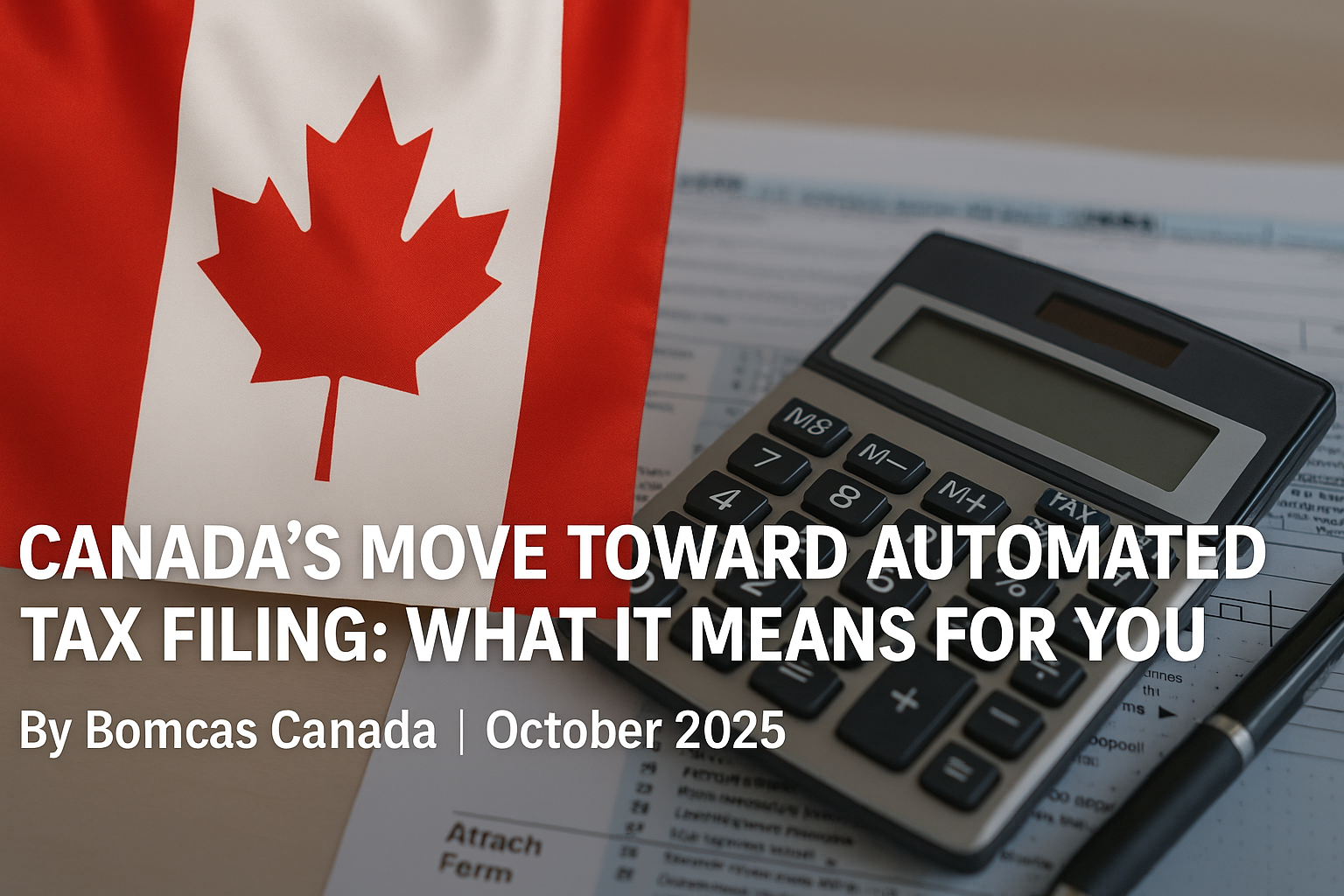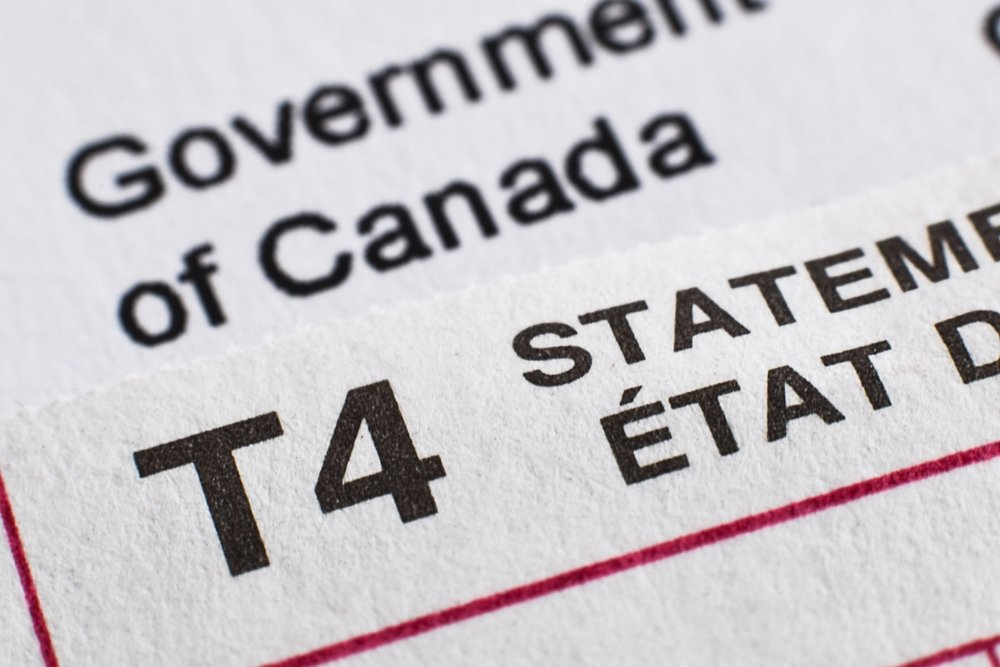T2 tax return filing is a vital compliance requirement that affects more than 2.9 million Canadian corporations yearly. Companies just need to pay attention to detail, ensure accurate financial records and understand current tax regulations. BOMCAS, Canada’s leading corporate tax compliance and planning professionals, understands the challenges businesses face at the time they prepare their T2 returns.
This detailed guide shows you how to file T2 tax returns that work while maximizing available deductions and credits. You’ll learn everything in the process from basic requirements and filing deadlines to documentation needs and electronic filing options through EFILE. The guide also helps corporations understand income calculation, balance sheet preparation, and tax planning strategies to optimize their tax position. These strategies ensure full compliance with Canadian tax laws.
Understanding T2 Tax Return Requirements
Canadian corporations need to understand T2 tax return requirements to stay compliant with tax laws. The Canada Revenue Agency (CRA) has 50-year old guidelines that outline corporate filing obligations, deadlines and penalties.
Who needs to file a T2 return
Canadian businesses must understand their T2 Corporation Income Tax Return filing obligations. Resident corporations have mandatory filing requirements that cover several business types:
- Non-profit organizations
- Tax-exempt corporations
- Inactive corporations
- Corporations with no tax payable
Crown corporations that are tax-exempt, Hutterite colonies, and registered charities do not need to file returns. Any non-resident corporation must submit a T2 return when they conduct business in Canada, generate taxable capital gains, or sell taxable Canadian property during the tax year.
Filing deadlines
Companies need to file their T2 tax returns within six months after their fiscal year-end. A corporation’s tax year aligns with its fiscal period, and businesses can choose their preferred start and end dates. Here’s how the deadlines work:
- Companies that end their tax year on the last day of a month must file by the last day of the sixth month after year-end
- Businesses with tax years ending on other dates need to file on the same day of the sixth month after year-end
The deadline moves to the next business day if it lands on a weekend or public holiday.
Penalties for non-compliance
The CRA enforces tough penalties when companies fail to meet T2 filing requirements. Here’s how the penalty structure works:
| Violation Type | Initial Penalty | Monthly Addition | Maximum |
|---|---|---|---|
| Standard Late Filing | 5% of unpaid tax | 1% per month | 12 months |
| Repeat Late Filing | 10% of unpaid tax | 2% per month | 20 months |
Several other penalties may apply in specific cases:
- Companies required to file electronically face a $1,388 penalty for non-compliance
- Unreported income amounts over $694 result in a 10% penalty
- Making false statements or omissions will cost you the greater of $138.80 or 50% of understated tax
Unpaid tax balances accumulate compound interest daily at 10% per year. BOMCAS tax professionals warn that these penalties can substantially affect your company’s finances, which makes accurate and timely filing vital to stay in good standing with the CRA.
The rules changed after 2023. Now most corporations must submit their returns electronically because the CRA eliminated the previous $1.39 million threshold for mandatory electronic filing. This change means proper digital record keeping and knowledge of electronic filing procedures are more important than ever.
Gathering Necessary Financial Information
Complete financial documentation is the life-blood of successful T2 tax return preparation. BOMCAS tax professionals believe that proper record-keeping will give you compliance and optimal tax positions for corporations.
Income Statement
The income statement is a vital component of T2 filing that details all revenue sources and expenses during the tax year. Corporations must maintain detailed records of:
- Operating revenue and other income sources
- Cost of goods sold and operating expenses
- Investment income and capital gains
- Depreciation and amortization expenses
Balance Sheet
A well-laid-out balance sheet reveals a corporation’s financial position at year-end. The statement needs careful focus on asset valuation, liability recognition and equity calculations. Companies should keep their supporting documents for six years after the last relevant tax year, especially when you have long-term property acquisitions and disposals.
General Index of Financial Information (GIFI)
CRA has created the GIFI system as a standardized way to handle financial reporting and process it quickly. This coding system gives unique identifiers to common items in financial statements:
| Financial Item | GIFI Code | Description |
|---|---|---|
| Cash | 1001 | Current assets |
| Office Expenses | 8810 | Operating costs |
| Accounts Receivable | 1060 | Current assets |
Corporations must keep their GIFI-coded financial statements as detailed as traditional ones. To name just one example, a company with 40 distinct items in its regular financial statements should have the same number of coded entries in its GIFI submission.
Your GIFI submission needs these extra documents:
- Notes to financial statements
- Schedule 141 (GIFI Additional Information)
- Supporting schedules for specific transactions
BOMCAS experts suggest using certified tax preparation software with GIFI coding features to classify and report financial information accurately. This method helps you file returns smoothly while meeting CRA’s requirements.
Corporations must prepare their financial records in GIFI format for electronic filing. Paper copies are no longer needed with this standardized system. CRA’s electronic validation helps speed up return processing and boost audit selection accuracy. Proper GIFI setup becomes crucial to file T2 tax returns efficiently.
Choosing Your Filing Method
The right filing method for T2 tax returns substantially affects how efficiently and accurately companies submit their returns. BOMCAS tax professionals suggest that companies should assess their options based on their unique situations and regulatory needs.
Electronic filing options
T2 tax return submissions have evolved significantly, and electronic filing now dominates the process with over 90% of corporations choosing this method. Corporations can submit their returns electronically through these channels:
- CRA’s Corporation Internet Filing service
- My Business Account (for business owners)
- Represent a Client (for authorized representatives)
Corporations need CRA-certified tax preparation software to file electronically. The T2 Auto-fill service makes secure information downloads possible directly from CRA systems. The T2 Attach-a-doc service lets corporations submit supporting documentation within 24 hours after filing.
Paper filing process
Corporations with annual gross revenue under $1.39 million can choose paper filing, though electronic filing remains the preferred method. The process needs:
- CRA-issued T2 forms must be filled out (regular or short version)
- All relevant schedules and GIFI forms should be attached
- Financial statements and supporting documents must be included
- Documents should be mailed to the tax center that matches the corporation’s registered address
Important: Non-resident corporations must send their paper submissions to the Sudbury, Ontario tax center only.
Pros and cons of each method
| Filing Method | Advantages | Disadvantages |
|---|---|---|
| Electronic | Immediate confirmation, faster processing, fewer errors, environmental benefits | Software costs, technical requirements, internet dependency |
| Paper | No software required, familiar process, direct document attachment | Longer processing time, higher error risk, no immediate confirmation |
Most corporations must file electronically after 2023 since the $1.39 million threshold will no longer exist. These corporations are exempt:
- Insurance corporations
- Non-resident corporations
- Corporations reporting in functional currency
- Tax-exempt corporations under section 149 of the Income Tax Act
Non-compliance penalty: Your corporation will face a $1,388 penalty if you’re required to file electronically but don’t comply. BOMCAS professionals stress that you need proper digital records and a clear understanding of electronic filing procedures. This helps you avoid penalties and process tax returns quickly.
The T2 Pre-filing verification service checks for critical errors. You can verify your data against CRA systems before submission, which reduces the risk of rejection and delays by a lot.
Completing Key Sections of the T2 Return
Tax professionals at BOMCAS know that becoming skilled at T2 tax returns demands precision and a solid grasp of schedules of all types and calculations. They stress that each section needs accurate completion to maintain compliance and achieve the best tax positions.
Identification
The T2 return’s first nine pages, called the “jacket,” contain significant identification and simple financial information. Corporations must provide:
- Corporate details and business number
- Tax year specifications
- Type of corporation (CCPC, public, or other)
- Main business activity codes (NAICS)
- Shareholder information
Private corporations need to complete Schedule 50 with detailed disclosures when shareholders own 10% or more of common or preferred shares. This information determines the corporation’s status and its applicable tax rates.
Income calculation
Tax professionals use specific schedules to calculate taxable income systematically:
| Schedule | Purpose | Key Components |
|---|---|---|
| Schedule 1 | Net Income Reconciliation | Accounting vs. Tax Income |
| Schedule 3 | Dividend Information | Portfolio Dividends, Part IV Tax |
| Schedule 4 | Loss Continuity | Historical Loss Tracking |
| Schedule 7 | Investment Income | Small Business Deduction Eligibility |
Canadian-Controlled Private Corporations (CCPCs) benefit from a preferential tax rate between 11% and 13%, which varies by province. This rate applies to the first $694,000.08 of active business income that qualifies for the small business deduction.
Deductions and tax credits
T2 returns provide multiple ways to optimize taxes through smart use of deductions and credits:
- Common Business Deductions:
- Capital Cost Allowance (Schedule 8)
- Scientific Research & Experimental Development
- Manufacturing and Processing Profits Deduction
- Resource-Related Deductions
- Available Tax Credits:
- Investment Tax Credits (Schedule 31)
- Foreign Tax Credits (Schedule 21)
- Provincial/Territorial Tax Credits
- Clean Technology Investment Credits
BOMCAS professionals highlight that tax preparation software helps corporations with automatic calculations and schedule population that reduces manual entry errors. Understanding the basic principles is vital to ensure accurate reporting and optimal tax planning.
CCPCs with taxable income above the small business threshold or non-CCPC entities can claim the General Tax Rate Reduction. The final tax liability comes from Part I tax calculations that include these reductions and applicable credits.
Schedule 141’s notes checklist asks corporations specific questions about their financial activities. This checklist ensures detailed disclosure and CRA compliance. Companies use this documentation as a final verification step before submission to confirm proper reporting of all information.
Maximizing Tax Deductions and Credits
Strategic tax planning is the life-blood of effective corporate financial management. BOMCAS tax professionals know that companies must focus on tax planning throughout the year to maximize deductions and credits while complying with CRA regulations.
Common business deductions
Businesses can substantially reduce their taxable income by strategically using available deductions. The Capital Cost Allowance (CCA) program lets businesses deduct depreciable property costs over time and offers improved rates for specific asset classes. Corporations that acquired assets before 2024 can take advantage of these benefits:
- Immediate expensing of up to $1.5 million for eligible capital assets
- Enhanced first-year CCA rates of up to 100% for clean energy equipment
- Accelerated Investment Incentive providing up to three times the normal first-year deduction
Operating expenses represent a significant category of deductions. Businesses can deduct employee salaries, rent, utilities, and professional fees. The business’s home office expenses qualify based on the space percentage used for operations, which is calculated using the square footage method.
Available tax credits for corporations
Canadian businesses can access several tax credits that reward specific business activities and investments:
| Credit Type | Rate | Maximum Benefit |
|---|
| SR&ED | 15-35% | $3M annually |
| Clean Technology | 30% | No limit |
| Regional Development | 10% | Based on investment |
| Digital Innovation | 15% | Project-specific |
The Scientific Research and Experimental Development (SR&ED) program rewards qualifying CCPCs with generous incentives. Small corporations can benefit from higher rates under this program. Businesses that invest in clean technology after March 2023 can claim substantial credits. These credits apply to renewable energy projects and carbon capture initiatives.
Strategies for tax optimization
Smart tax planning needs an integrated approach to balance immediate gains with future outcomes. BOMCAS professionals suggest these proven tactics:
- Timing Considerations
- Time your big purchases to get the most from first-year allowances
- Adjust dividend payouts based on tax rate shifts
- Sync business activities with your fiscal year-end
- Structural Planning
- Review your corporate structure to get the best tax treatment
- Think over setting up separate corporations for different business lines
- Check if your shareholder agreements are tax-efficient
Small business deductions take a hit when passive investment income goes beyond $50,000. Your corporation should keep an eye on investment income levels and look for ways to keep the lower small business tax rate.
Clean technology investments need to meet specific labor requirements from November 2023 to get the full credit rate. Missing these requirements will cut your available credits by 10 percentage points.
BOMCAS tax experts stress that you need solid documentation for every deduction and credit you claim. This means tracking your capital purchases, keeping vehicle expense logs, and documenting your research work for SR&ED claims. A regular review of your tax strategies helps you get the most benefits while staying compliant with changing rules.
Submitting Your T2 Return and Next Steps
Submitting a T2 tax return stands as a crucial step for corporate tax compliance. BOMCAS tax professionals stress that proper submission protocols align with CRA guidelines. This approach ensures smooth processing and helps companies avoid penalties.
Filing the return
Your corporation’s T2 return needs to be complete and accurate before submission. The filing process requires you to:
- Check all schedules and attachments
- Review GIFI codes for accuracy
- Confirm proper signing authority
- Follow electronic signature guidelines
Corporations must use CRA-certified software to submit returns electronically. This software checks the return before transmission. The Corporation Internet Filing service provides a filing confirmation number right away. You should keep this number for your records.
Non-resident corporations must send their submissions to:
Sudbury Tax Center
Post Office Box 20000, Station A
Sudbury ON P3A 5C1
Canada
Payment options
Businesses can process their corporate tax payments through several channels that are a great way to get flexibility and convenience:
| Payment Method | Processing Time | Key Features | Best For |
|---|---|---|---|
| Online Banking | 1-3 business days | 24/7 access | Regular payments |
| CRA My Payment | Immediate | Visa Debit required | Last-minute payments |
| Pre-authorized Debit | Scheduled | Automatic processing | Installment payments |
| Bank/Post Office | Same day | Requires voucher | In-person preference |
Corporations need to think over these factors while scheduling their payments:
- Each payment method’s processing duration
- The bank’s cut-off times that affect same-day processing
- Required adjustments during holidays and weekends
- Non-resident corporations’ international transfer specifications
Post-filing considerations
Corporations face a crucial phase that needs careful attention after they submit their T2 return.
The CRA’s assessment process works through these steps:
- Corporation Services handles the original processing
- Documentation submitted gets reviewed
- Assessment notice gets generated
- Notifications arrive electronically or by mail
Your post-filing actions should be:
- Compare the Notice of Assessment with your filed returns
- Respond quickly to any CRA information requests
- Keep your filed documentation accessible
- Check My Business Account regularly for messages
BOMCAS professionals suggest creating a post-filing checklist that helps you track all requirements. Your checklist should:
| Timeline | Action Required | Responsibility |
|---|---|---|
| Week 1 | Confirm receipt of filing | Corporation |
| Week 2-4 | Monitor for CRA queries | Tax Department |
| Week 4-8 | Review Assessment Notice | Financial Officer |
| Month 3+ | Address any discrepancies | Tax Professional |
Businesses using My Business Account will get electronic correspondence by default once royal assent takes effect. You can still choose paper correspondence by giving the CRA 30 days’ notice.
BOMCAS tax specialists suggest keeping detailed records if you expect reassessments. You should document:
- Your original filing materials
- Supporting calculations
- Communication records
- Payment confirmations
The CRA’s processing times change based on how you file and its complexity:
- Electronic returns: 2-4 weeks
- Paper returns: 8-10 weeks
- Complex returns: Up to 16 weeks
My Business Account or Represent a Client platforms give you up-to-the-minute access to:
- Account balances
- Payment status
- Assessment notices
- CRA correspondence
T2 amendments need specific procedures when you make post-filing adjustments. Make sure you document all changes and support them with relevant information. You might need extra schedules or explanatory notes, depending on your adjustment type.
Conclusion
T2 tax return filing needs careful attention to documentation, accurate financial reporting, and smart tax planning. Canadian corporations must handle complex requirements that cover identification details, income calculations, and available deductions. They also need to meet strict deadlines and electronic filing rules. Current tax regulations keep changing, and companies can use various credits and deductions. This creates a complex compliance process that affects their financial health.
Companies need professional guidance to achieve the best tax positions while following CRA regulations. BOMCAS tax professionals provide the expertise needed for complete T2 return preparation and submission. Their knowledge helps corporations get maximum benefits and avoid getting hit with penalties. They do this through accurate filing, timely submissions, and smart tax planning that follows current Canadian tax laws.
FAQs
What are the steps to file a T2 corporation income tax return?
To file your T2 corporation income tax return, follow these five steps:
- Complete the online T2 tax return quote form.
- Submit your financial documents and fill out the required survey.
- Await a customized service proposal tailored to your needs.
- Electronically sign your T2 corporation income tax return.
- Receive confirmation numbers from the tax authorities.
Is it possible to file a T2 tax return on my own?
Yes, you can file a T2 corporate income tax return by yourself; however, it is advisable to engage a certified tax accountant. The Canada Revenue Agency (CRA) itself recommends professional assistance to ensure accuracy and compliance.
What is the cost range for filing a T2 return?
The cost of filing a T2 return varies depending on the specifics of your business. For non-active business corporations, the base rate begins at CAD 553.81 plus tax. Depending on your corporation’s unique requirements, costs typically range from CAD 1109.01 to CAD 2776.00.
How can I file a nil return for a corporation?
The simplest method to file a nil corporate tax return is to employ an accountant. This approach is not only straightforward but also the safest, as your accountant will be familiar with the necessary information and can ensure all documents are prepared correctly.










 View Our Location
View Our Location





 181 Meadowview Bay, Sherwood Park, AB T8H 1P7, Canada (Online Clients Only)
181 Meadowview Bay, Sherwood Park, AB T8H 1P7, Canada (Online Clients Only)